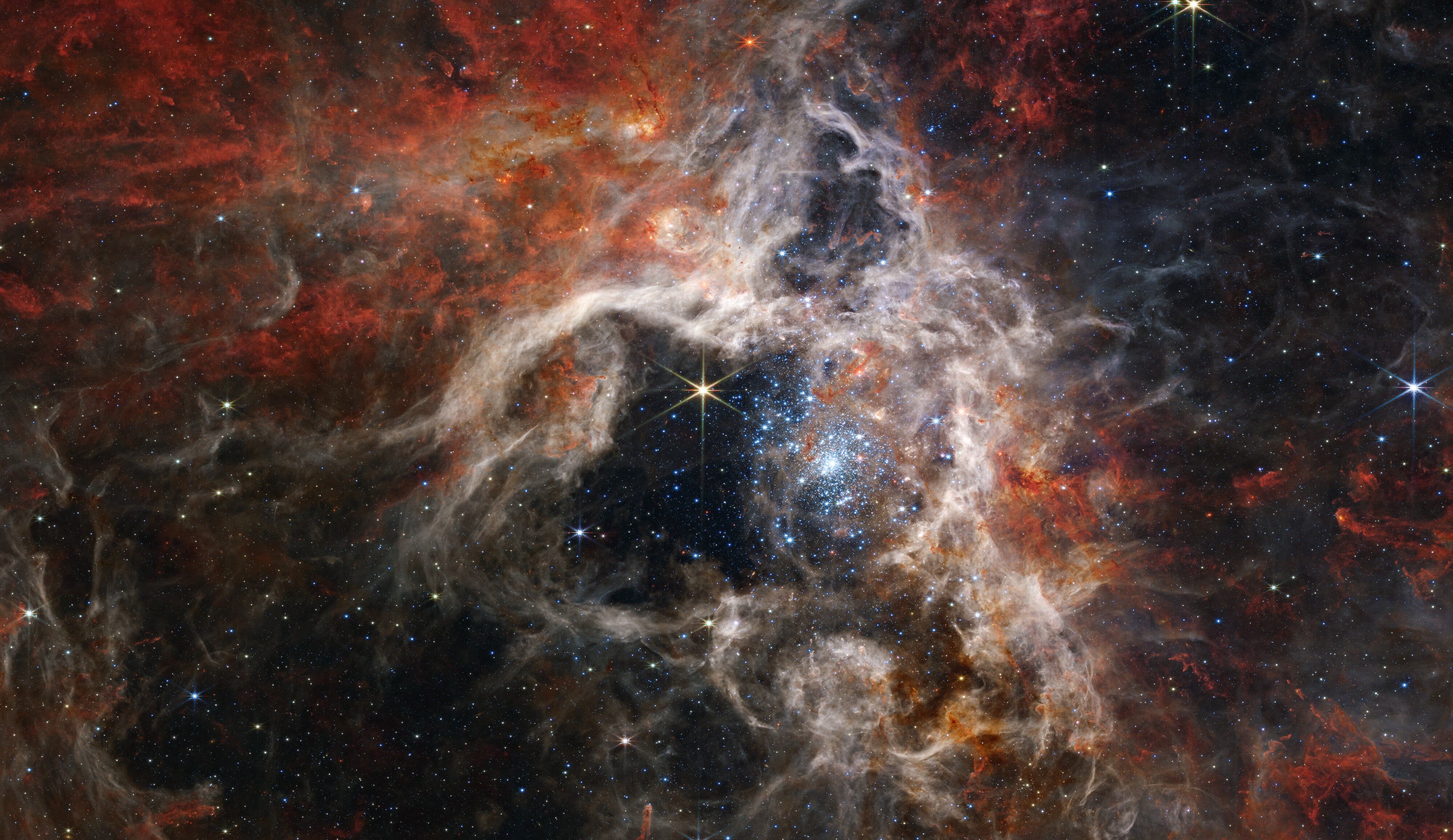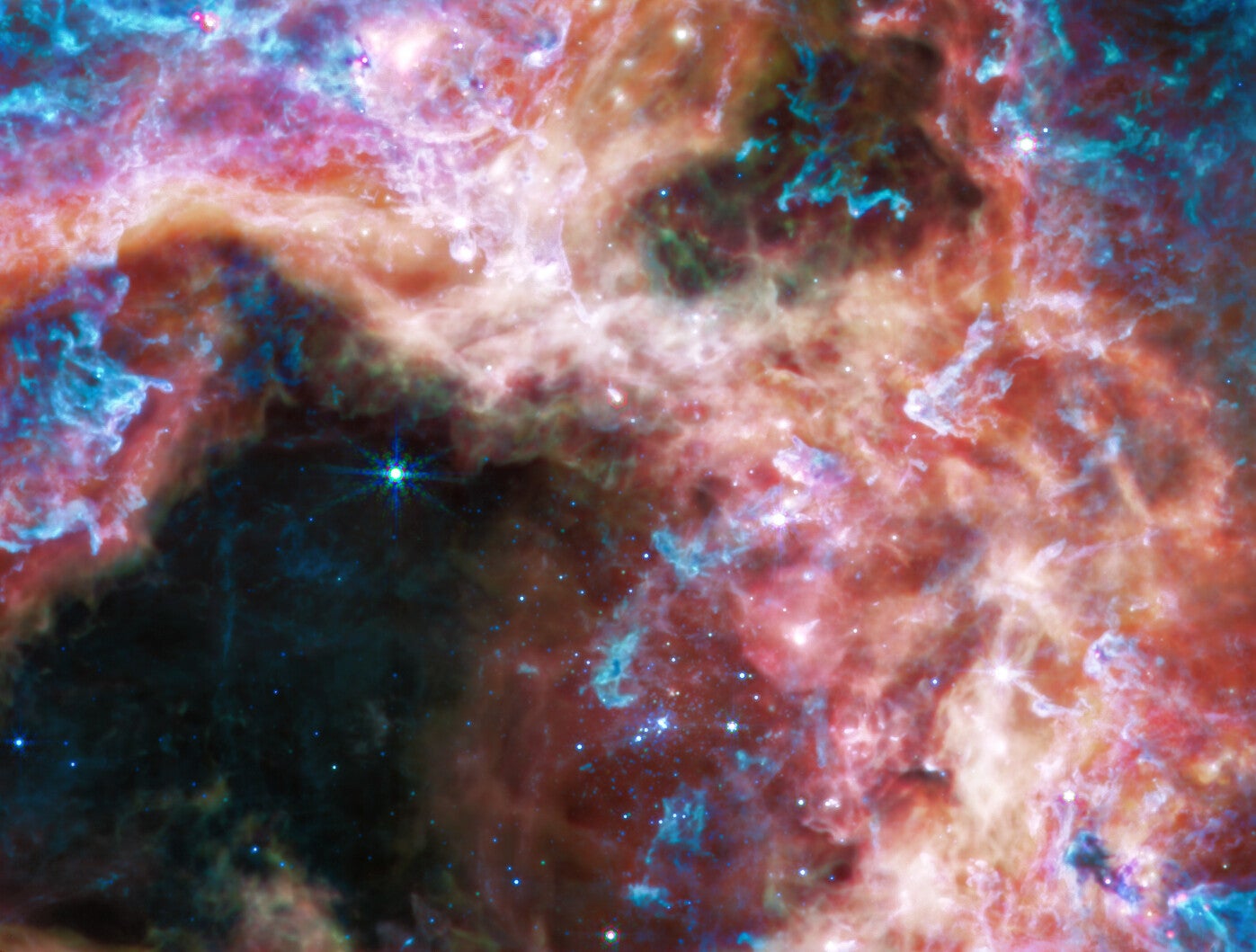Nasa’s Webb Telescope spies a cosmic spider in new image
The Webb Telescope has turned its attentive gaze to the stunning Tarantula Nebula, showing the nest stars and gas like never before

Your support helps us to tell the story
From reproductive rights to climate change to Big Tech, The Independent is on the ground when the story is developing. Whether it's investigating the financials of Elon Musk's pro-Trump PAC or producing our latest documentary, 'The A Word', which shines a light on the American women fighting for reproductive rights, we know how important it is to parse out the facts from the messaging.
At such a critical moment in US history, we need reporters on the ground. Your donation allows us to keep sending journalists to speak to both sides of the story.
The Independent is trusted by Americans across the entire political spectrum. And unlike many other quality news outlets, we choose not to lock Americans out of our reporting and analysis with paywalls. We believe quality journalism should be available to everyone, paid for by those who can afford it.
Your support makes all the difference.The James Webb Space Telescope has captured a cosmic spider, an exquisitely detailed image of the Tarantula Nebula around 160,000 light years from Earth.
Also known as 30 Doradus, the Tarantula Nebula is a region of very active star formation in the Large Magellanic Cloud, a dwarf galaxy nearby our own Milky Way galaxy. The nebula is of major interest to astronomers not just because it is the site of star formation, but because the chemical make-up of the nebula is similar to that of the broader universe in its infancy, billions of years ago.
The nebula takes its name from its visual similarity to the spider silk-lined burrow of a tarantula spider, albeit a burrow around 340 light years across.
The image was taken with Webb’s near-infrared camera, or Nircam instrument, which helps to highlight the hot young stars in the region. The hollow center of the spider’s burrow results from the hot gas outflows of a cluster of young stars that have pushed away the cooler dust and gas of the nebula.
Webb also trained its mid-infrared instrument, or Miri, on the Tarantula Nebula, which reveals a very different side of the celestial structure. The heat of young stars fades when looking in mid-infrared light, and the gas and dust clouds of the nebula glow in reds and purples.

The new observations of the Tarantula Nebula are just some of the many stunning images produced by the Webb Telescope since Nasa and its partner agencies first began releasing observations from the new space telescope on 12 July. Launched in December 2021 after more than 20 years of development, the Webb telescope is just beginning would could become a 20+ year career in studying and imaging the universe.
Join our commenting forum
Join thought-provoking conversations, follow other Independent readers and see their replies
Comments